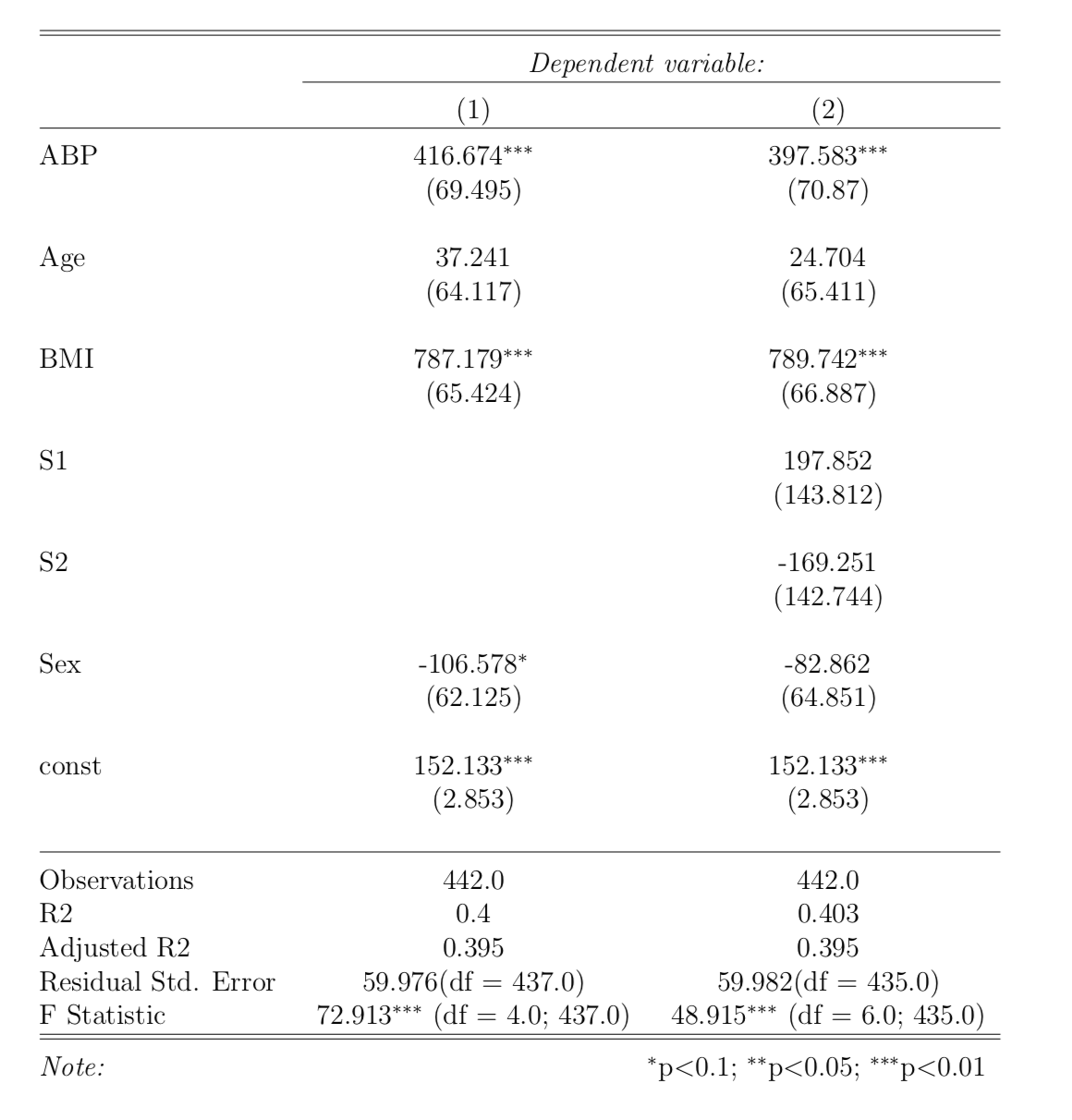-
Notifications
You must be signed in to change notification settings - Fork 50
New issue
Have a question about this project? Sign up for a free GitHub account to open an issue and contact its maintainers and the community.
By clicking “Sign up for GitHub”, you agree to our terms of service and privacy statement. We’ll occasionally send you account related emails.
Already on GitHub? Sign in to your account
Different Latex Formatting - R vs Python #65
Comments
|
Thanks for your input @nikchha !
I don't think there is a way without code changes. On the other hand, I think the R version is just nicer with no drawbacks. So I guess it's worth implementing (not very soon I fear - feel free to provide a PR).
I agree with you on readability, but the R version takes much more space on the page, which is problematic with large tables (and different from the standard for economists - which is, like it or not, set by Stata). This is why this stargazer by default copies the R behavior with And to be honest, I'm not a fan of inserting the empty lines - it just doesn't seem the right way to implement spacing in LaTeX. However, it should be trivial to add an optional argument providing the space to leave between coefficients. I'm opening a separate issue for this: #66 . |
... and ironically, it seems like the Python version was like that originally: |
|
Thank you for answering so quickly!
It's really funny that someone preferred the current version - perhaps unintentionally. I haven't looked into the code of the Python version in detail yet, but when I find some time I will submit a PR.
I agree with you in #66 - custom spacing with the \[.3cm] is a much better and more flexible approach than the hacky solution from the R stargazer implementation. |
|
Mistake in commit, reopening |

Hi,
Thank you for the Python port of the super useful R package stargazer.
I noticed two differences between the R version and the Python port:
(1) Different separator above coefficients
R:
Python
Is there a way to enable the R separator? Or does it require code changes?
(2) R inserts an empty row between variables, which increases readability
The R version output is much more readable than the Python ports output. Is there a way to change the Python behavior?
The text was updated successfully, but these errors were encountered: